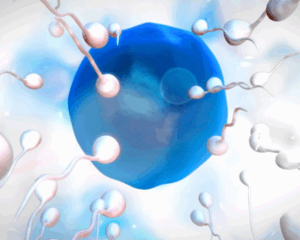
Prolistem for Non-Obstructive Azoospermia: A Comprehensive Guide
Prolistem for non obstructive azoospermia, Non-obstructive azoospermia (NOA)

When a couple faces difficulty in conceiving, it’s common to focus on the woman’s health. However, male infertility plays a significant role in around 40% of couples struggling with conception. One such issue men may encounter is azoospermia, a condition where there is no sperm in the semen. If you are asking, “What if my husband has no sperm?” it’s crucial to understand the causes, available treatments, and the ways forward.
In this blog, we will explore the causes of azoospermia, potential treatments, and how couples can navigate the emotional and practical challenges it brings. Additionally, we will delve into related conditions like oligospermia (low sperm count), male infertility diagnosis, and options such as sperm retrieval and assisted reproductive technologies (ART).
Azoospermia is a medical condition where a man’s semen contains little to no sperm. It is one of the most serious causes of male infertility and can be caused by a variety of factors. Azoospermia is divided into two types:
Obstructive Azoospermia (OA): This occurs when a blockage in the male reproductive tract prevents sperm from being released during ejaculation. Although sperm is being produced in the testicles, it is unable to travel through the ducts due to this blockage.
Non-Obstructive Azoospermia (NOA): This type occurs when there is a problem with sperm production in the testes. In these cases, sperm production is either very low or absent altogether.
Understanding why azoospermia happens is key to identifying the best course of action. There are several potential causes, both genetic and environmental. These include:
Klinefelter Syndrome: A genetic condition where males have an extra X chromosome, leading to fertility issues.
Y-Chromosome Microdeletions: Certain deletions of the Y chromosome can affect sperm production.
Cystic Fibrosis: Men with cystic fibrosis often experience obstructive azoospermia due to blockages in the reproductive tract.
Issues with the pituitary gland or hypothalamus can affect the production of hormones necessary for sperm production.
Low levels of testosterone, elevated estrogen levels, or other hormonal imbalances can also result in azoospermia.
A varicocele is an enlargement of the veins within the scrotum. This condition can cause poor sperm production and is one of the leading causes of male infertility.
Previous infections, such as sexually transmitted diseases (STDs), mumps, or other viral infections, can lead to blockages in the reproductive system and affect sperm production.
Physical injury or trauma to the testes or reproductive organs can disrupt sperm production or cause blockages, leading to azoospermia.
Exposure to toxins, chemicals, or heavy metals at work or home may interfere with sperm production.
Excessive alcohol consumption, drug use, and smoking are also known to impact sperm count and quality.
Although male infertility is more commonly associated with women’s age, men’s fertility can decline with age as well. Sperm production may decrease, and sperm quality may decline over time.
If you and your partner are having trouble conceiving, it is essential to seek professional medical advice. To diagnose azoospermia, a doctor will typically follow these steps:
Physical Examination: The doctor will check for any abnormalities in the testicles, scrotum, and other reproductive organs.
Semen Analysis: A sperm sample is collected and analyzed under a microscope. This test helps confirm whether sperm is present in the semen.
Blood Tests: These tests are conducted to measure hormone levels, including testosterone, FSH (Follicle-Stimulating Hormone), and LH (Luteinizing Hormone), which are critical for sperm production.
Genetic Testing: If a genetic condition like Klinefelter syndrome or Y-chromosome microdeletion is suspected, genetic tests may be recommended.
Ultrasound: If a blockage is suspected, an ultrasound of the scrotum or testicles may be ordered to examine the reproductive tract.
When a diagnosis of azoospermia is made, the treatment options will depend on the type of azoospermia and the underlying cause. These options may include:
Varicocele Repair: If a varicocele is identified as the cause, surgery can be performed to repair the enlarged veins, which may improve sperm production.
Sperm Retrieval: In cases of non-obstructive azoospermia (NOA), sperm may still be extracted directly from the testicles through a procedure called testicular sperm extraction (TESE) or percutaneous epididymal sperm aspiration (PESA). These sperm can then be used in assisted reproductive technologies like IVF (in-vitro fertilization).
In cases where azoospermia is caused by hormonal imbalances, hormone therapy may be recommended. This could include treatments like Clomiphene or Human Chorionic Gonadotropin (hCG), which stimulate sperm production.
In-Vitro Fertilization (IVF): This method involves retrieving eggs from the woman and fertilizing them in the laboratory with sperm (either from the husband or a donor). IVF with ICSI (Intracytoplasmic Sperm Injection) can be used when sperm is retrieved directly from the testicles.
Sperm Donation: In cases where sperm cannot be retrieved or produced, sperm from a donor may be used for artificial insemination or IVF.
If lifestyle factors such as smoking, alcohol consumption, or stress are identified as contributing factors, making healthy lifestyle changes may improve overall fertility.
Men may also be advised to avoid exposure to certain chemicals or heat sources that can affect sperm production.
Facing infertility due to azoospermia can be emotionally challenging for both partners. It can affect self-esteem, masculinity, and relationships. Couples need to communicate openly and support each other through this process. Seeking counseling or therapy may also be beneficial to address the emotional and psychological aspects of infertility.
If you are dealing with the question, “What if my husband has no sperm?” it’s important to recognize that infertility doesn’t define a relationship. Many couples facing male infertility go on to have successful pregnancies through treatments like sperm retrieval, IVF, and sperm donation. Emotional support, combined with the right medical intervention, can lead to positive outcomes.
Understanding Azoospermia: This condition occurs when no sperm is present in a man’s semen, which can be caused by a variety of factors such as genetic issues, hormonal imbalances, infections, or lifestyle choices.
Diagnosis: A thorough diagnosis involves semen analysis, blood tests, genetic testing, and possibly ultrasound.
Treatment Options: Depending on the underlying cause, treatments may include hormonal therapy, surgery, or assisted reproductive technologies like IVF and sperm donation.
Emotional Support: Coping with azoospermia can be emotionally challenging. Open communication and professional counseling can help couples manage the emotional aspects of infertility.
If you’re asking yourself, “What if my husband has no sperm?” remember that many treatment options are available, and with medical guidance and emotional support, conception can still be a very real possibility for you.
Conclusion: Understanding and addressing azoospermia is the first step toward overcoming male infertility. If you or your partner are facing this challenge, it’s important to seek professional help and explore the available options. No matter the cause, there are solutions to help build the family you’ve always dreamed of.

Prolistem for non obstructive azoospermia, Non-obstructive azoospermia (NOA)

Introduction Male infertility, especially caused by azoospermia, affects

We are proud to have participated in the

Introduction: A New Hope in Male Infertility Treatment
Prolistem®, a patented male fertility formula for azoospermia and zero sperm count, has not been evaluated by the Food and Drug Administration. This product, designed to support sperm production restoration and male infertility treatment, is not intended to diagnose, treat, cure, or prevent any disease.
PROLISTEM® is a Patented Formula
Copyright © 2025 Prolistem®